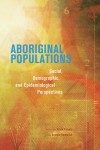If Aboriginal Canadians all lived in one place they would be Canada’s sixth largest province with 14 seats in the House of Commons. If they were a nation they would be the 161st member state of the United Nations, larger than Cyprus, Iceland or Fiji.
Aboriginal Populations examines the striking demographics of First Nations, Inuit and Métis. Its scope is encyclopedic and compelling; its findings are often surprising; its commentaries are eloquent. Editors Frank Trovato and Anatole Romaniuk capture a community in transition after centuries of despair: “They have not been on the receiving end of history, from whatever angle the matters are seen.”
First, the numbers.
Authors conclude Canada’s Aboriginal population is probably higher now than at any point in millennia though actual numbers of the pre-Confederation era are historical guesswork – perhaps 200,000, maybe more. By 1900 disease and misfortune decimated the community to some 107,000 people, and then began “a slow journey toward demographic recovery”.
By 2017 aboriginals will number some 1.4 million. Researchers note many Aboriginal languages marked for extinction years ago have in fact survived despite “dire predictions” of assimilation.
“As much as we would like, and should, celebrate Aboriginal people’s demographic revival at this particular point in their history, our view ought to be a much more subdued, to say the least, when we mull over their demographic fortune since the inception of European colonization about four centuries ago,” Aboriginal Populations concludes. “The demographic growth of Aboriginal people over that long drawn out historical period pales in comparison with the growth of the European population”
Second, the people.
Aboriginals are more likely to have shorter lives than other Canadians though even here improvements are found. If the life expectancy of a Status Indian man is 71.4 years – still lower than the national average – it is far better than the life expectancy of 59 years reported in 1975.
Statistically, First Nations members who live on reserves drink less than most Canadians: “This tends to dispel the reputation Aboriginal people have for being given to alcoholism,” authors write. Yet there are other depressing data:
- •Aboriginal children are more likely to live in a single-parent home;
- •Status Indians are three times more likely to die by homicide, suicide, auto wrecks, fatal fires, drowning or poisoning;
- •Aboriginals are more likely to be imprisoned, and more likely to reoffend after their release due to chronic substance abuse, joblessness and broken families;
- •Aboriginals are more likely to smoke, and likelier to suffer obesity due to poor diet.
“Remarkably, the very similar ills are to be found among many indigenous peoples across the world,” authors note: “Everywhere they share a similar historic fate of colonization, oppression, marginalization and socio-cultural disruption.”
Aboriginals are also statistically poor, and suffer the troubles that plague poor people everywhere: violence, sickness and unemployment. Yet Aboriginal Populations is not despairing; it profiles a community in recovery. “The overarching theme,” authors write, “is that Canada’s Aboriginal population has reached a critical state of transition.”
By Holly Doan
Aboriginal Populations: Social, Demographic and Epidemiological Perspectives, edited by Frank Trovato and Anatole Romaniuk; University of Alberta Press; 555 pages; ISBN 9780-88864-6255; $60






